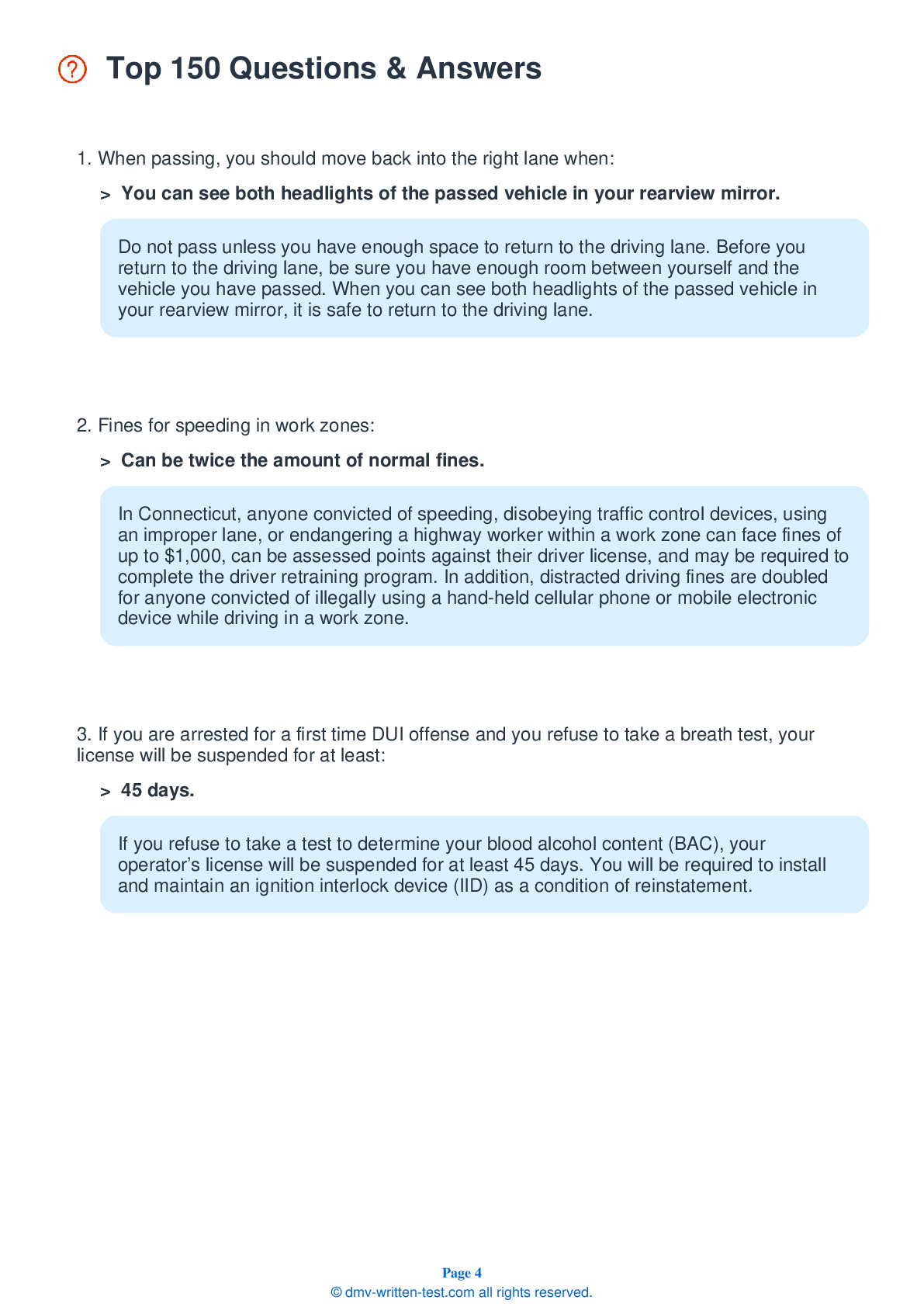2025 Connecticut Permit Test 19
The following questions are from real DMV written tests. These are some of the actual permit questions you will face in Connecticut. Each permit practice test question has three answer choices. Select one answer for each question and select "grade this section." You can find this button at the bottom of the drivers license quiz. For a complete list of questions and answers for Connecticut please visit https://cheat-sheets.dmv-written-test.com/en/connecticut/car.
Number of Tests
Number of Question
Passing Score
17. If oncoming headlights are blinding you while you are driving at night, you should:
Explanation
If the headlights of an oncoming vehicle are blinding, glance toward the right edge of the road instead of looking directly ahead. This should keep your vehicle safely on the road until you pass the oncoming vehicle.
18. Reaction time is slower after:
Explanation
Alcohol slows your reflexes and reaction time, reduces your ability to see clearly, and makes you less alert. As the amount of alcohol in your body increases, your judgment worsens and your driving skills decrease. You will have trouble judging distances, speeds, and the movement of other vehicles.
19. You are driving on a city street and see an emergency vehicle with flashing lights behind you. What should you do?
Explanation
You must yield the right-of-way to any emergency vehicle that is using its siren and lights. Drive to the right edge of the road and stop until the emergency vehicle has passed. If you are within an intersection, drive through the intersection first and then stop.
20. You should drive on the shoulder to pass a car:
Explanation
Passing on the right is permissible only if it is possible to do so without driving off the roadway. Never pass another vehicle on the shoulder because the other driver will not expect you to be there and may pull off the road.
21. When crossing a sidewalk to enter traffic from an alley or driveway, drivers should:
Explanation
When leaving an alley, driveway, or parking lot to enter a roadway, you must stop before driving onto a sidewalk or sidewalk area. Pedestrians and existing traffic have the right-of-way.
22. When should drivers yield the right-of-way to pedestrians in a crosswalk?
Explanation
Bring your vehicle to a complete stop at a crosswalk to yield the right-of-way to any vehicle or pedestrian already in the intersection. You may carefully proceed if your lane is completely clear.
23. You should allow an extra cushion of space:
Explanation
Drivers of trucks, buses, vans, or any vehicles pulling campers or trailers may not be able to see you if you are driving directly behind them. Increase your following distance when driving behind one of these vehicles. Additionally, large vehicles can block your view of the road, so increase your following distance to look around the sides of the vehicle and see the road ahead.
24. The best way to avoid a dangerous situation while driving is to:
Explanation
Always be aware of what is happening around your vehicle. Constantly observing your surroundings to the front, sides, and rear of your vehicle will help you see problems that may require you to change speed or roadway position.
25. If you miss your exit on the freeway, you should not:
Explanation




